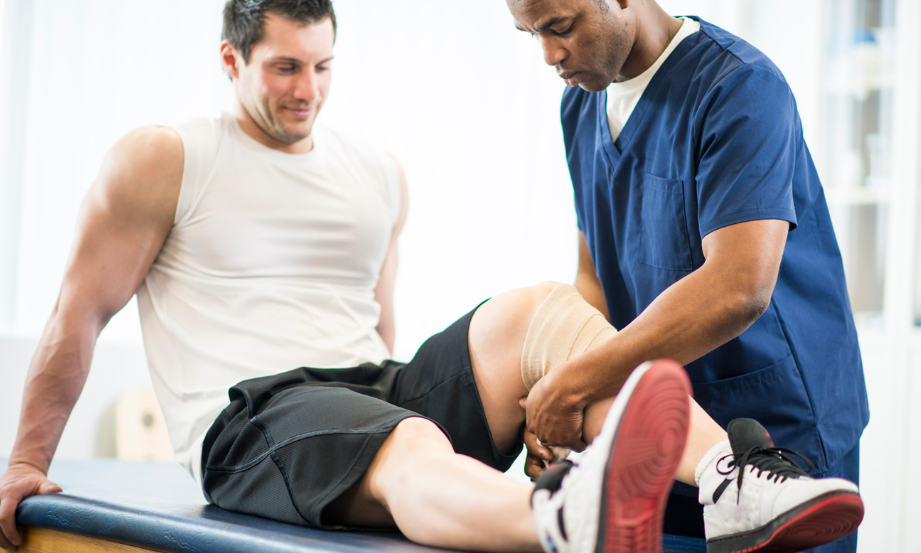In healthcare, Osteopath dover has emerged as a holistic and practical approach to treating injuries and promoting overall well-being. With their unique understanding of the body’s musculoskeletal system, osteopaths play a crucial role in facilitating recovery from injuries. This article explores how osteopaths can be instrumental in the healing process, addressing the symptoms and underlying causes of injuries.
Understanding Osteopathy:
Osteopathy is a branch of alternative medicine that focuses on the interconnection of the body’s structure and its inherent ability to heal. Osteopaths view the body as a unified system where the musculoskeletal components, organs, and circulatory systems work together. This holistic perspective guides their approach to injury recovery, emphasizing the importance of restoring balance within the body.
Comprehensive Assessment:
When you seek the expertise of an osteopath for injury recovery, the process typically begins with a comprehensive assessment. Unlike some traditional medical approaches that may focus solely on the site of pain, osteopaths examine the entire body. This thorough evaluation helps identify the symptoms and root causes of the injury, considering factors such as posture, muscle imbalances, and joint mobility.
Personalized Treatment Plans:
Osteopaths tailor their treatment plans to the individual needs of each patient. Recognizing that no two injuries are alike, these professionals employ various hands-on techniques to address specific issues. Manual manipulation, soft tissue massage, and joint mobilization are among the methods used to restore mobility, reduce pain, and enhance the body’s natural healing processes.

Restoring Structural Balance:
Injuries often disrupt the body’s structural balance, leading to compensatory patterns that can exacerbate the problem. Osteopaths work towards restoring this balance by focusing on the musculoskeletal system. By addressing misalignments, improving joint mobility, and releasing tension in muscles and connective tissues, they aim to create an environment conducive to healing.
Pain Management Without Medication:
Osteopathy offers a non-pharmacological approach to pain management. Instead of relying on medications that may only mask symptoms, osteopaths aim to identify and alleviate the underlying causes of pain. This not only provides relief but also reduces the reliance on painkillers, minimizing the risk of dependency and side effects.
Preventing Recurrence:
Beyond immediate recovery, osteopaths emphasize preventive measures to reduce the likelihood of injury recurrence. Patients are empowered to take an active role in maintaining their well-being through education on posture, movement patterns, and lifestyle adjustments. This proactive approach aligns with the holistic philosophy of osteopathy, viewing health as a dynamic equilibrium.
Collaboration with Other Healthcare Professionals:
Osteopaths often work in collaboration with other healthcare professionals to ensure a comprehensive and integrated approach to injury recovery. This may include coordinating with physiotherapists, orthopedic specialists, or general practitioners to optimize the overall care plan. Such collaboration ensures that patients receive well-rounded and multidisciplinary support.
Consideration of Psychological Factors:
Injury recovery is not solely a physical process; psychological factors also play a significant role. Osteopaths recognize the interconnectedness of the mind and body, addressing the physical manifestations of injury and the emotional and psychological aspects. This holistic approach contributes to a more complete and enduring recovery.
Improved Circulation and Healing:
Osteopathic techniques, such as soft tissue manipulation and joint mobilization, can enhance blood circulation to the injured area. Improved blood flow facilitates the delivery of essential nutrients and oxygen, expediting healing. This aspect of osteopathy accelerates recovery and contributes to the overall health of tissues and organs.
Enhancing Range of Motion:
Injuries often result in reduced flexibility and limited range of motion. Osteopaths employ targeted interventions to address these issues, working on joints, muscles, and connective tissues to enhance flexibility and restore the full range of motion. This not only aids in recovery but also helps individuals regain their normal daily activities with greater ease.
Stress Reduction and Relaxation:
The hands-on techniques used by osteopaths not only address physical tension but also promote relaxation. This can be particularly beneficial in cases where stress exacerbates physical symptoms. By reducing overall stress levels, osteopathy contributes to a more conducive environment for healing, fostering a holistic sense of well-being during recovery.
Postural Correction:
Osteopaths pay close attention to the body’s posture, recognizing its profound impact on overall health. Injuries often lead to compensatory postures that can perpetuate discomfort. Osteopathic interventions include strategies to correct these postural imbalances, promoting proper alignment. Restoring balance to the musculoskeletal system, osteopaths help prevent strain on specific body parts, contributing to long-term injury prevention and improved overall posture.
Conclusion:
Osteopathy stands out as a valuable ally in the journey of injury recovery, offering a holistic and personalized approach to healing. By delving beyond symptoms and addressing the root causes of injuries, osteopaths empower individuals to recover and enhance their overall well-being. The emphasis on collaboration, prevention, and the interconnectedness of physical and psychological factors makes osteopathy a compelling choice for those seeking a comprehensive and practical approach to injury rehabilitation. If you’re on the path to recovery, considering the expertise of an osteopath may be a transformative step towards restoring balance and vitality to your body.
Also, read: How Osteopathic Therapy Eliminate the Root Causes of Neck Pain?
